The benefits of continuous learning at work

Employees are the key to company growth. If employees are continuously learning and upskilling, it spells success for any organization. In this article, we’ll talk about the ins and outs of continuous learning and the long-term benefits of investing in your team’s lifelong learning journeys.
What is continuous learning?
Continuous learning, also called lifelong learning, is a person’s journey to learning new things and relearning old skills. Continuous learning is also a corporate term for constant professional development, or the willingness to improve at work. This can take several forms both formal and informal. It can look like these:
- Taking online courses
- Reading books
- Watching instructional videos
- Listening to podcasts
- Trying new skills

Even having casual conversations with senior workmates is part of continuous learning. Aside from professional development, lifelong learning is part of a company’s culture. A learning and growing company culture contributes heavily to innovation and ultimately, success.
Importance of continuous learning
So, how does continuous learning contribute to company success? Well, if your teams are learning something new every day or honing their existing skills, it’ll open up opportunities to reach and go beyond set goals. Another way to think about it is, what if your employees aren’t learning and growing?
A stagnant company is bound to fail! A workplace report by LinkedIn explains that agility is one of the most sought-after skills in individuals. Industries, workplaces, and companies are shifting quickly, and in a post-pandemic world, there’s no telling what could happen. Think about how AI is suddenly changing the shape of the creative, marketing, and writing fields overnight.

Agile learning and continuous learning is your company’s safeguard. And in the same LinkedIn report, shows us the key is in training and the learning and development (L&D) sector. This all starts with companies prioritizing a learning culture.
Continuous Learning Benefits
Here are some concrete benefits and examples of continuous learning if you aren’t already convinced.
For an individual employee, it can:
- Boost their confidence and competence
- Help them obtain licensure and certification
- Realize new ways to contribute to work
- Solidify their career paths and goals
- Stay marketable with their skill sets
- Give them an edge against the competition
At a company level, it can:
- Broaden the scope of organizational goals
- Create opportunities for new projects
- Drive innovation
- Keep costs down by investing in existing teams
- Gain credibility in the company’s industry
- Provide an upper hand against competitors
But we understand that it’s not easy and you can’t build a learning culture overnight.
How to get started with continuous learning
There are a few simple steps your company and L&D managers can take to get employees to be continuous learners. There are a lot of amazing resources and tools available right now (and for free!) if you know exactly where to look.
Step 1: Create training programs
The first step is always to have training programs in place ready to deploy and deliver to your teams. Building readily available training opportunities shows your dedication to your team’s growth which encourages them to be lifelong learners. Create courses that are relevant to your employees, this means investing in programs that they both need and want.
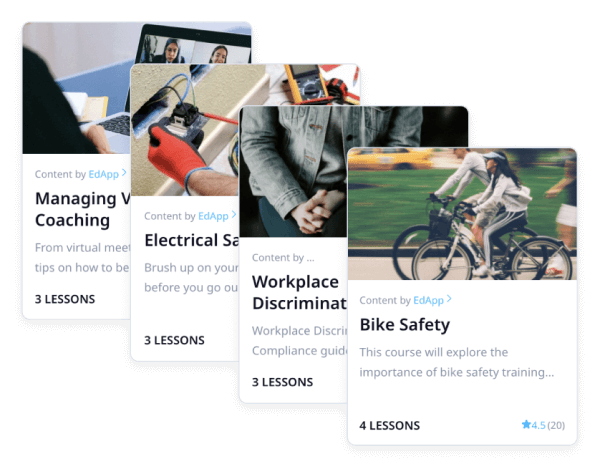
Employees are much more likely to take courses that interest them, or at the very least are usable for their line of work. For this reason, we suggest using tools to help you out, so whether you’re a full L&D team or a one-man department, you can easily create and deliver training programs.
Invest in a learning management system (LMS) this is what we’ve found to be the most effective and efficient way to train at the corporate level.
Step 2: Use the right learning tools
There are a lot of tools out there that promise a thousand features, so we know how difficult it is to pick one. We suggest a tool that gives the power to create courses, deliver training easily, and track important statistics for improvement. Our top pick is EdApp, a free learning platform with an intuitive course authoring tool, a mobile-first design, and complete reporting and analytics.
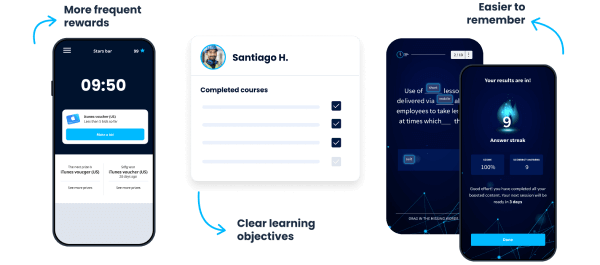
EdApp lets you create courses with a push of a button with its AI Create feature, you just need to enter a topic, sentence, or any string of words! And all of the courses created are designed with a microlearning model which means that they’re bite-sized lessons with interactive media to make sure learning is still fun and engaging.
Step 3: Deliver training and reinforcement to your teams
Even with amazing courses, you still need your content to be accessible to your employees. And this can be different for every team because of scheduling. Our modern solution for this is mobile learning. Practically everyone has a smartphone, so why not make training accessible right on their devices?
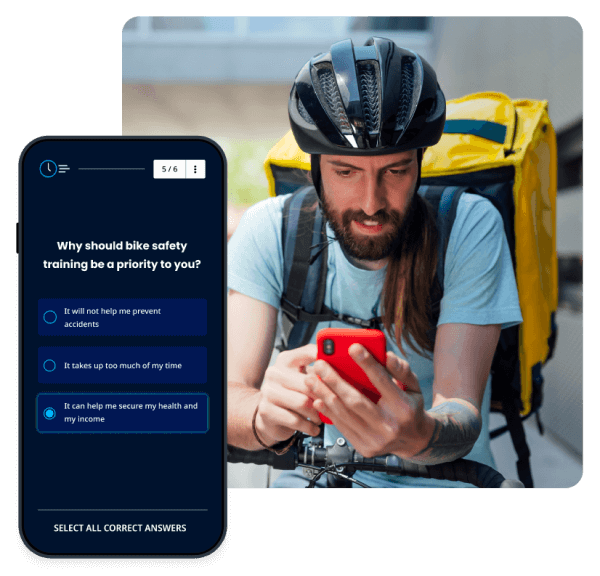
EdApp courses are designed to work on any device whether you’re on desktop or mobile. As a training manager, you can set delivery dates, set deadlines, and even send push notifications for reminders. A lot of these can be easily automated so you don’t have to micromanage each program.
Step 4: Track progress, performance, and feedback
Reporting and analytics are crucial to training management. You need to see where the strengths and weaknesses of your teams are to help them reach their potential. It’s also a great way to put your finger on the pulse of employee performance. Having statistics to gain better insights into your programs will guarantee better performance.
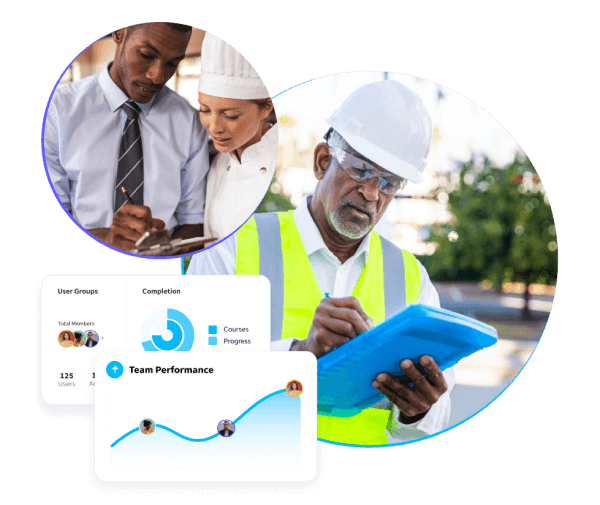
EdApp for example has a feature where review quizzes are sent out right after an employee takes a course. Depending on the result of the quiz, EdApp will automatically send out follow-up quizzes focused on the areas your employees are having a hard time with. This saves a lot of energy and time for L&D managers!
And aside from that, on an LMS you can directly add feedback from employees to help you improve your programs.
Step 5: Improve your programs with collaboration
An LMS like EdApp lets you collaborate with your learners directly. Whether through the editable courseware or simply through survey feedback, it’s easy to communicate how to improve training at work. EdApp also has a peer learning feature which allows your teams to discuss and review courseware together.
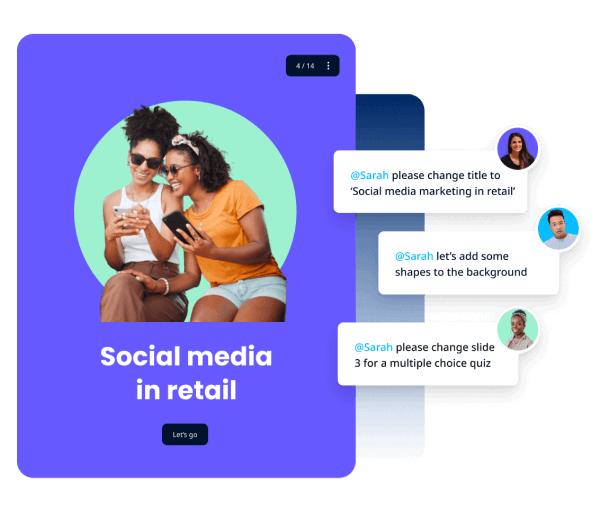
A learning culture is built on collaboration and one of the best ways to learn is from each other. It’s more likely your employees ask work-related questions to team members anyway, so why not create a platform for it as well? To be continuously learning is to be constantly seeking improvement, especially for training programs.
Develop a learning culture at work and encourage continuous learning today!
Build a learning culture today and encourage your teams to be continuous learners. This is made so much easier with learning tools and platforms that do the heavy lifting for you. Stay ahead of the competition, look after your employees’ growth, and watch your company succeed with some of our tips.
Use an award-winning learning management system today for continuous learning, try EdApp. It’s free forever!
Author
Alec Bailon
Alec is an eLearning expert for EdApp, a pioneer LMS that designs creative mobile workplace training solutions. On the off days, they enjoy cooking, reading, or finding a live show or play to watch.
